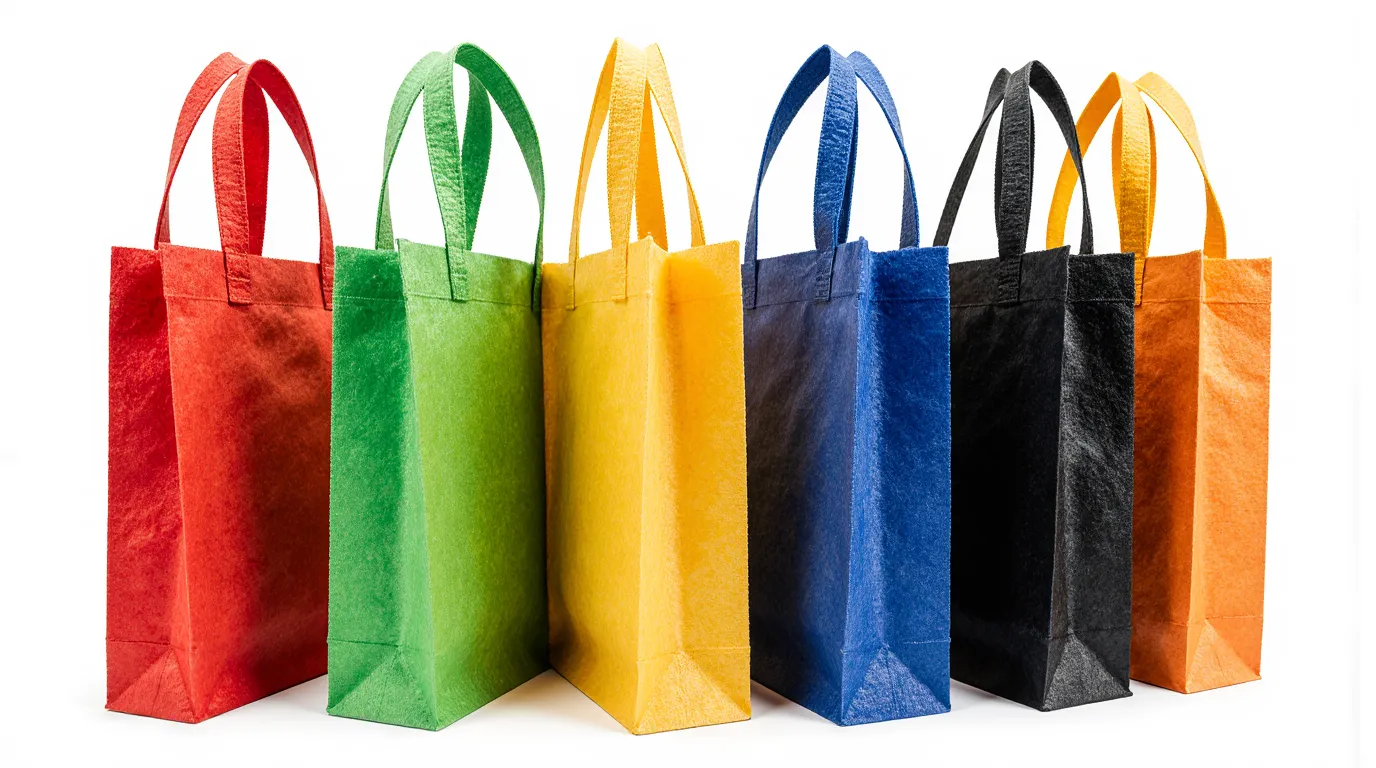
Carrier Bag Carrier – Smart & Handy Bag Holder 2025
A carrier bag carrier is a game-changer for managing multiple shopping bags. This handy accessory acts as a central handle or grip designed to hold several shopping or grocery bags at once, making it easier to carry everything in one go.
Imagine this: You’re leaving the grocery store with six separate bags digging into your fingers, trying to keep your balance. A carrier bag carrier solves this common shopping problem by bringing all your bags together into one comfortable grip.
These clever tools can usually handle:
- 4-8 shopping bags at a time
- Weights up to 100 pounds
- Different types of bag handles
- Both plastic and reusable bags
The secret is in its simple yet effective design – a strong handle that spreads the weight evenly across your hand or shoulder. With a shopping bag carrier, you’ll experience less strain on your hand, better balance, and more carrying capacity. This small investment turns your shopping trips from difficult tasks into manageable ones, making it a must-have for any serious shopper.
Table of Contents
Understanding Different Types of Carrier Bag Carriers
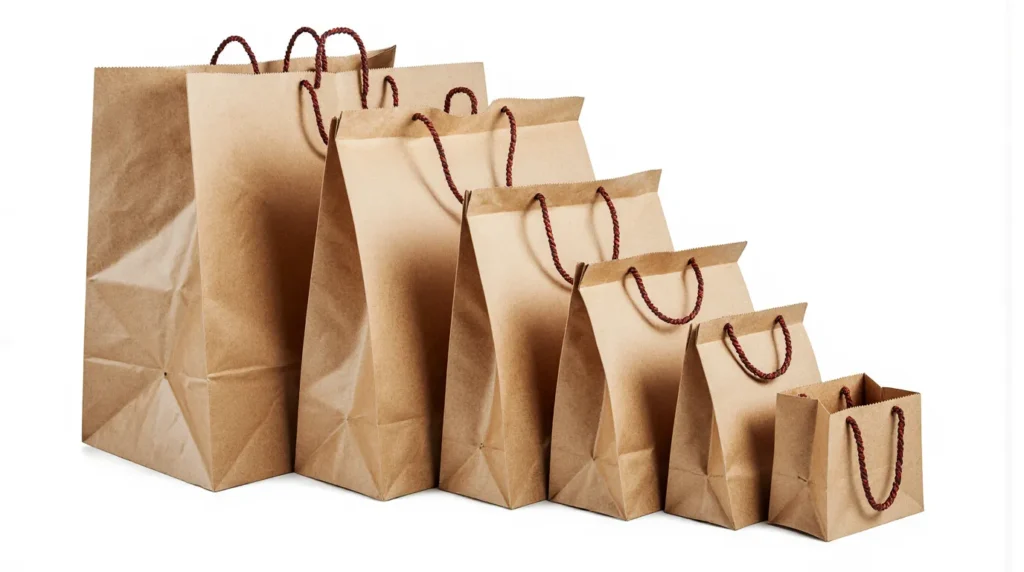
The market offers three distinct categories of carrier bag carriers, each designed to meet specific needs and preferences.
1. Handheld Carriers
Handheld carriers are compact and designed for easy grip. They are perfect for quick trips to the grocery store or when you need to carry a light to medium load.
- Weight capacity: 15-30 pounds
- Drawback: Limited to single-hand use
2. Strap-Based Carriers
Strap-based carriers have adjustable shoulder straps, allowing you to carry them hands-free. This type of carrier distributes weight evenly across your shoulders, making it suitable for longer walks.
- Weight capacity: 30-50 pounds
- Drawback: Can cause shoulder strain with excessive weight
3. Heavy-Duty Carriers
Heavy-duty carriers are built with reinforced materials like metal or thick plastic. They have multiple grip options and can handle heavy loads without compromising comfort.
- Weight capacity: 50-100 pounds
- Drawback: Bulkier to store and transport when not in use
Each carrier type offers unique advantages based on your shopping habits:
Quick Shopping Trips
Handheld carriers excel in convenience stores or small grocery runs. Their lightweight design allows easy storage in purses or car compartments.
Extended Shopping Sessions
Strap-based carriers shine during mall visits or multiple store stops. The hands-free design enables phone use or door opening while carrying bags.
Bulk Shopping
Heavy-duty carriers handle warehouse store purchases or weekly family grocery hauls. Their robust construction prevents bag handles from breaking under stress.
Weather Considerations
- Handheld carriers: Best in dry conditions
- Strap-based carriers: Include water-resistant options
- Heavy-duty carriers: All-weather performance
The choice between carrier types depends on:
- Average shopping load weight
- Typical walking distance
- Storage space availability
- Physical comfort preferences
- Weather conditions in your area
The Role of Materials in Carrier Bag Carriers
The materials used in carrier bag carriers directly impact their performance, durability, and user comfort. High-quality materials ensure these accessories withstand regular use while providing a comfortable carrying experience.
Common Materials and Their Benefits:
Plastic Components
- High-density polyethylene (HDPE) offers excellent durability
- Lightweight yet strong enough to handle heavy loads
- Resistant to water and weather conditions
- Cost-effective manufacturing process
- Available in various colors and designs
Metal Elements
- Aluminum handles provide superior strength
- Stainless steel components resist rust and corrosion
- Enhanced weight distribution capabilities
- Long-lasting performance under heavy loads
- Ideal for professional or commercial use
Rubber Features
- Non-slip grips prevent hand fatigue
- Shock-absorbing properties reduce strain
- Temperature-resistant characteristics
- Comfortable handling in various weather conditions
- Enhanced grip security during use
Material Combinations
The most effective carrier bag carriers often incorporate multiple materials:
- Metal core with rubber coating for handles
- Plastic body with reinforced metal joints
- Rubber grips with plastic or metal frame support
Quality Indicators
When evaluating the quality of materials used in carrier bag carriers, consider the following indicators:
- Weight capacity ratings
- Material thickness
- Joint construction
- Surface finish
- Flexibility and rigidity balance
The selection of materials affects both functionality and user experience. Premium carriers feature materials tested for:
- Load-bearing capacity
- Weather resistance
- Temperature variations
- Chemical exposure
- Regular wear and tear
These material considerations ensure carrier bag carriers maintain their structural integrity while providing reliable service through countless shopping trips and heavy-load situations.
Benefits Beyond Convenience: Why You Should Invest in a Carrier Bag Carrier

A carrier bag carrier transforms your shopping experience through practical advantages that extend far beyond basic convenience. Let’s explore these key benefits:
1. Reduced Physical Strain
Using a carrier bag carrier can significantly reduce physical strain on your body during shopping trips. Here are some specific ways it helps:
- Eliminates direct pressure on fingers and palms
- Prevents circulation issues from tight bag handles
- Minimizes wrist and hand fatigue during long walks
- Reduces the risk of repetitive strain injuries
2. Enhanced Load Distribution
One of the key advantages of using a carrier bag carrier is its ability to enhance load distribution. Here’s how it works:
- Spreads weight evenly across the carrying surface
- Prevents bags from clustering and bumping into each other
- Maintains stability while walking
- Allows for better posture maintenance
3. Increased Carrying Capacity
The strategic design of carrier bag carriers enables users to transport more bags in a single trip compared to carrying them by hand. Here are some specific benefits:
- Transport up to 50% more bags in a single trip
- Handle heavier items with greater control
- Stack bags efficiently without tangling
- Combine different bag sizes and weights effectively
4. Time and Energy Efficiency
Using a carrier bag carrier can help you save time and energy during your shopping trips. Here’s how:
- Complete shopping trips with fewer journeys
- Navigate through crowded spaces more easily
- Access your car or public transport smoothly
- Manage multiple purchases from different stores
5. Safety Features
Modern carrier bag carriers come equipped with various safety features to ensure secure and comfortable carrying. Here are some examples:
- Non-slip grip surfaces for better hold
- Reinforced stress points for added durability
- Weight distribution technology for balanced carrying
- Secure bag attachment mechanisms to prevent slipping
6. Versatility in Use
Carrier bag carriers are versatile tools that can be used in various situations beyond just grocery shopping. Here are some scenarios where they come in handy:
- Weekly grocery shopping trips
- Carrying gifts during holidays or special occasions
- Assisting with moving day tasks
- Transporting items for beach outings or picnics
The physical benefits of using a carrier bag carrier create a ripple effect of positive outcomes. Users report increased shopping confidence, reduced anxiety about heavy loads, and greater independence when managing multiple purchases. The device’s ability to streamline the carrying process makes it an invaluable tool for anyone who regularly transports multiple bags.
Practical Applications: When and How to Use Your Carrier Bag Carrier Effectively
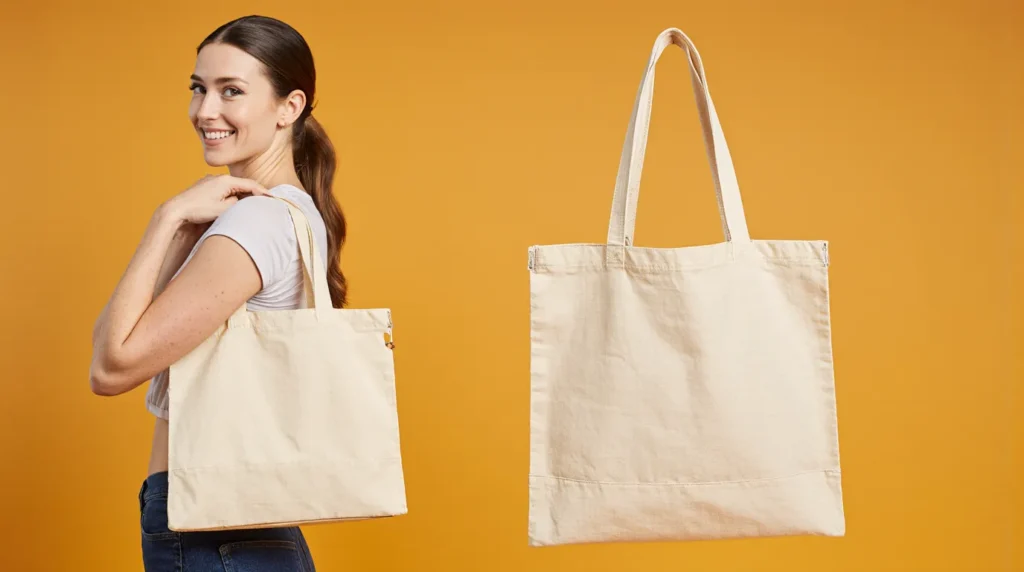
A carrier bag carrier shines in numerous real-world situations. Here’s a practical guide to maximize its utility:
Grocery Shopping Scenarios
- Weekly bulk shopping trips
- Fresh produce runs with multiple small bags
- Combined shopping at different stores
- Frozen food transport requiring quick home transfer
Home Organization Tasks
- Moving items between rooms
- Seasonal decoration changes
- Organizing garage or storage spaces*
- Transporting recycling materials
Special Events
- Holiday gift transportation
- Picnic supplies distribution
- Beach day essentials
- Party supplies delivery
Professional Uses
- Office supply transportation
- Document delivery between departments
- Sample collection distribution
- Trade show materials handling
Tips for Effective Usage
Load Distribution
- Place heavier items in the center
- Balance weight on both sides
- Stack similar items together
- Position fragile items on top
Strategic Bag Arrangement
- Group frozen items together
- Keep cleaning supplies separate
- Place frequently needed items within easy reach
- Arrange by destination or room
Time-Saving Techniques
- Pre-sort bags while shopping
- Use color-coded bags for different categories
- Pack bags upright for stability
- Leave space for last-minute additions
Weather Considerations
- Rain protection: Position water-sensitive items inward
- Hot weather: Group temperature-sensitive items
- Cold weather: Bundle frozen items for insulation
- Windy conditions: Secure loose items centrally
The carrier bag carrier adapts to various situations beyond simple grocery transport. Its versatility makes it an essential tool for both planned outings and spontaneous needs, transforming multiple challenging trips into single, manageable journeys.
Making an Eco-Friendly Choice: Reusable Tote Bags as Alternative Carrier Bags
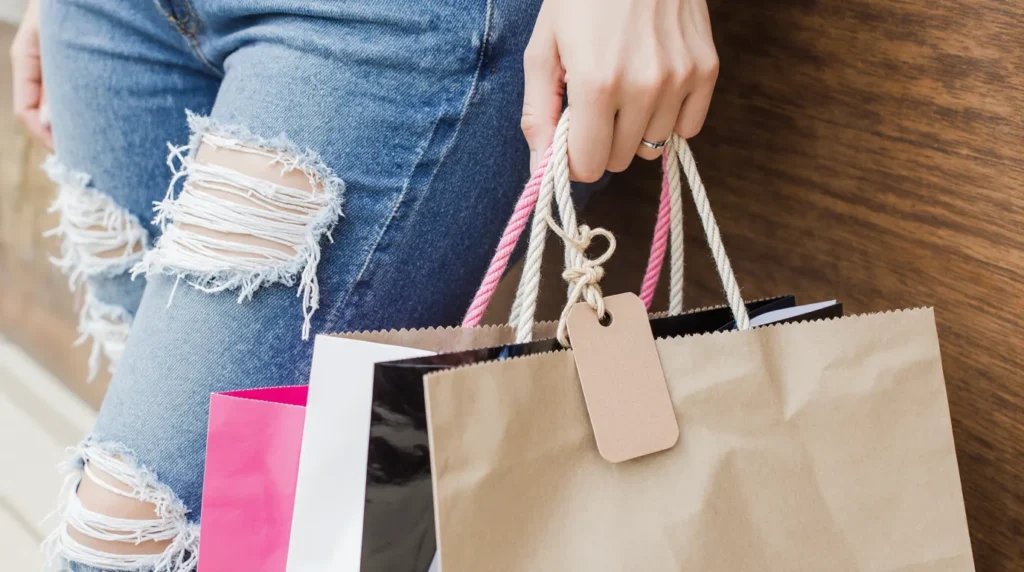
Reusable tote bags represent a significant step toward sustainable shopping practices. A single reusable tote bag can replace hundreds of single-use plastic bags throughout its lifetime, dramatically reducing plastic waste in landfills and oceans.
Environmental Impact of Common Tote Bag Materials:
1. Cotton Totes
- Biodegradable and renewable resource
- Requires significant water usage during production
- Needs to be used 131 times to offset its environmental impact
- Washable and durable for long-term use
2. Recycled Cotton
- Lower environmental footprint than virgin cotton
- Uses post-industrial cotton waste
- Reduces water consumption and chemical usage
- Maintains durability while being eco-conscious
3. Hemp
- Requires minimal water and pesticides
- Naturally resistant to pests
- Enriches soil quality
- High durability rating
4. Jute
- Fast-growing renewable resource
- Biodegradable material
- Minimal environmental impact
- Natural resistance to water damage
Sustainable Features of Modern Tote Bags:
- Water-resistant coatings from natural sources
- Reinforced stitching for extended lifespan
- Machine washable designs
- Compact folding capabilities for convenient storage
The production process of reusable tote bags has evolved to incorporate eco-friendly practices. Manufacturers now utilize low-impafct dyes, organic materials, and ethical labor practices. These improvements create a positive ripple effect throughout the supply chain, supporting sustainable farming practices and responsible manufacturing methods.
Local regulations supporting reusable bags have shown promising results. Cities implementing plastic bag bans report significant reductions in plastic waste, with some areas noting up to 80% decrease in plastic bag-related litter. These statistics demonstrate the tangible impact of switching to reusable alternatives.
Comparing Ergonomics: Carrier Bag Carriers vs. Traditional Carrying Methods
The battle between plastic bag handles and carrier bag carriers comes down to basic ergonomics and human physiology. Traditional plastic bag handles create concentrated pressure points on fingers and palms, leading to:
- Reduced blood circulation
- Temporary indentations in skin
- Potential nerve compression
- Muscle strain in fingers and hands
Carrier bag carriers redistribute this pressure through intelligent design features:
Weight Distribution
- Wide, padded grip surface
- Even pressure across the palm
- Multiple contact points for heavy loads
- Balanced weight center
Posture Benefits
- Natural arm position while carrying
- Reduced shoulder strain
- Better walking balance
- Minimized need to switch hands frequently
Safety Advantages
- Non-slip grip surfaces
- Secure bag attachment points
- Reinforced load-bearing components
- Built-in emergency release mechanisms
A standard plastic bag handle concentrates up to 50 pounds per square inch on finger tissue. In contrast, carrier bag carriers spread this force across a surface area 5-10 times larger, bringing pressure down to comfortable levels.
Research indicates users can carry the same weight load 3 times longer using a carrier bag carrier compared to traditional handles. This extended carrying capacity stems from:
- Ergonomic handle angles
- Anti-fatigue grip materials
- Strategic load positioning
- Proper weight distribution
The enhanced control offered by carrier bag carriers also reduces the risk of dropped items and spilled contents. Their sturdy construction prevents the common issue of handles stretching or tearing under pressure – a frequent problem with standard plastic bags.
For individuals with arthritis, carpal tunnel syndrome, or reduced hand strength, carrier bag carriers provide essential support that makes independent shopping possible. The ergonomic advantages transform a potentially painful experience into a manageable task.
Choosing the Right Carrier Bag Carrier for Your Needs
Selecting an appropriate carrier bag carrier requires careful consideration of several key factors to ensure it meets your specific requirements.
1. Weight Capacity
- Light-duty carriers (up to 20 lbs): Ideal for quick grocery runs
- Medium-duty carriers (20-50 lbs): Perfect for weekly shopping trips
- Heavy-duty carriers (50+ lbs): Designed for bulk purchases or commercial use
2. Handle Design
- Cushioned grips: Reduce hand fatigue during extended use
- Adjustable handles: Accommodate different hand sizes
- Non-slip coating: Provides secure grip in wet conditions
3. Material Quality
- Reinforced plastic: Budget-friendly, lightweight option
- Stainless steel: Durable, rust-resistant choice
- Aircraft-grade aluminum: Premium option with maximum strength
4. Portability Features
- Foldable design: Easy storage when not in use
- Compact size: Fits in purse or car compartment
- Built-in carrying case: Protected storage solution
5. Additional Design Elements
- Multiple carrying positions
- Quick-release mechanisms
- Load distribution technology
- Anti-swing features
6. Size Considerations
- Standard width (12-15 inches): Fits most shopping bags
- Extended width (15-20 inches): Accommodates larger bags
- Adjustable width: Versatile option for various bag sizes
7. Specialized Features
- Hook systems for hanging additional items
- Built-in bottle holders
- Reflective strips for visibility
- Weather-resistant coatings
The right carrier bag carrier balances these features with your shopping habits. A city dweller making frequent small trips might prefer a lightweight, compact model, while suburban families doing weekly bulk shopping benefit from heavy-duty carriers with extended width capacity.
Consider your typical shopping load, frequency of use, and storage space when evaluating these features. A carrier that matches your specific needs transforms routine shopping trips into comfortable, efficient experiences.
Caring for Your Carrier Bag Carrier: Maintenance Tips for Longevity
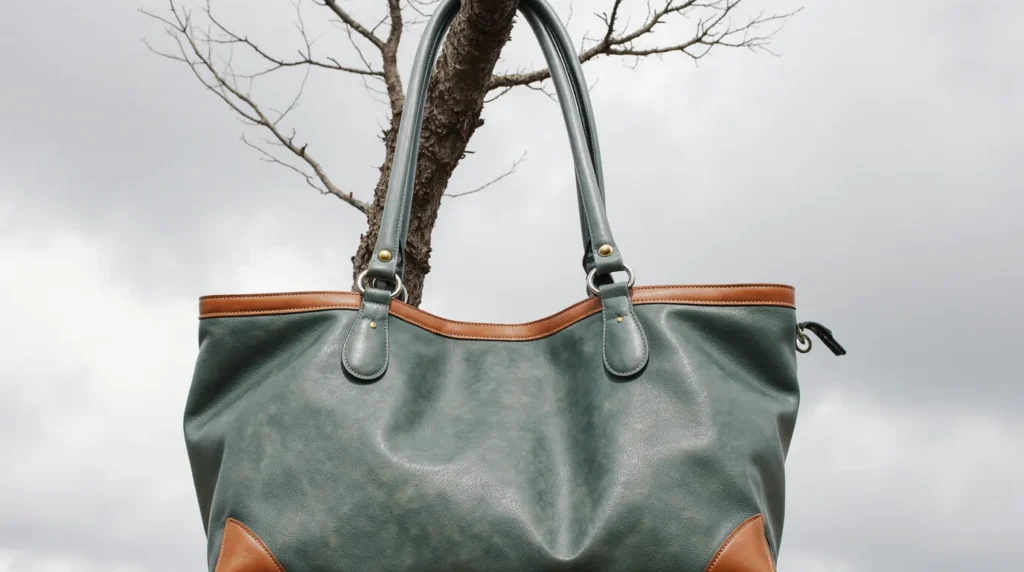
Proper maintenance of your carrier bag carrier extends its lifespan and preserves its functionality. Here’s a comprehensive guide to keeping your carrier in top condition:
1. Regular Cleaning Routine
- Wipe down plastic carriers with a damp cloth and mild soap
- Hand wash fabric carriers in cool water with gentle detergent
- Allow carriers to air dry completely before storage
- Remove any debris or dirt after each use
2. Material-Specific Care
Metal Carriers
- Check for rust spots regularly
- Apply rust prevention spray when needed
- Tighten loose screws or joints
- Store in a dry place
Plastic Carriers
- Avoid exposure to direct sunlight
- Clean with non-abrasive cleaners
- Check for cracks or stress points
- Keep away from extreme temperatures
3. Preventive Maintenance
- Inspect handles and grips before each use
- Test weight capacity periodically
- Replace worn-out padding or grip materials
- Address any damage immediately
4. Storage Guidelines
- Keep in a designated spot away from moisture
- Avoid stacking heavy items on top
- Maintain shape by storing flat or hanging
- Use protective covers for long-term storage
5. Signs of Wear to Monitor
- Fraying edges on fabric components
- Stress marks on plastic parts
- Loose or damaged stitching
- Compromised grip materials
- Bent or misaligned components
Implementing these care practices helps maintain the structural integrity of your carrier bag carrier. A well-maintained carrier continues to provide reliable service for your shopping needs while ensuring safe transport of your items.
Embracing Sustainability with Your Choice of Shopping Accessories
The shift toward eco-friendly shopping accessories marks a significant step in environmental conservation. Carrier bag carriers play a dual role in sustainability:
- They extend the life of reusable shopping bags by preventing wear and tear
- They encourage shoppers to opt for reusable bags instead of single-use plastic
A single carrier bag carrier can eliminate hundreds of plastic bags from landfills each year. When paired with durable shopping bags, these accessories create a powerful combination for sustainable shopping practices.
Impact of Sustainable Shopping Choices:
- Reduced plastic waste in oceans
- Lower carbon footprint from plastic production
- Decreased landfill accumulation
- Enhanced awareness of sustainable practices
Your choice of shopping accessories reflects a commitment to environmental stewardship. By investing in a carrier bag carrier and reusable bags, you become part of the solution to plastic pollution. These small changes in shopping habits create lasting positive effects on our planet’s health.
FAQs (Frequently Asked Questions)
What is a carrier bag carrier and how does it improve my shopping experience?
A carrier bag carrier is a handy accessory designed to help you carry multiple shopping or grocery bags comfortably and efficiently. It significantly enhances your shopping experience by reducing hand strain, improving load balance, and allowing you to transport several bags at once with ease.
What types of carrier bag carriers are available and what are their pros and cons?
There are mainly three types of carrier bag carriers: handheld carriers, strap-based carriers, and heavy-duty bag carriers. Handheld carriers are compact and easy to use but may have limited capacity. Strap carriers distribute weight more evenly for comfort but might be bulkier. Heavy-duty carriers are ideal for carrying heavier loads but can be less portable. Choosing the right type depends on your specific needs and preferences.
How do the materials used in carrier bag carriers affect their durability and comfort?
Carrier bag carriers are commonly made from durable materials such as plastic, metal handles, and rubber grips. Plastic offers lightweight convenience, metal handles provide strength and longevity, while rubber grips enhance comfort by preventing slipping. High-quality materials ensure durability, comfort during use, and overall better performance.
Why should I invest in a carrier bag carrier beyond just convenience?
Beyond convenience, investing in a carrier bag carrier reduces hand fatigue by distributing weight more evenly, improves load balance which helps prevent injuries, and increases your carrying capacity allowing you to transport multiple bags effortlessly. These benefits collectively make shopping trips more comfortable and efficient.
When is the best time to use a carrier bag carrier effectively?
Carrier bag carriers are especially useful during grocery shopping trips or when transporting multiple bulky items. They help manage several bags at once without causing discomfort or strain, making them ideal for busy shopping days or when handling heavy loads.
How do reusable tote bags compare as eco-friendly alternatives to traditional plastic bags?
Reusable tote bags made from materials like cotton or leather offer an eco-friendly alternative to single-use plastic bags by reducing plastic waste. They are durable, sustainable, and often stylish options that complement the use of carrier bag carriers for an environmentally conscious shopping experience.



